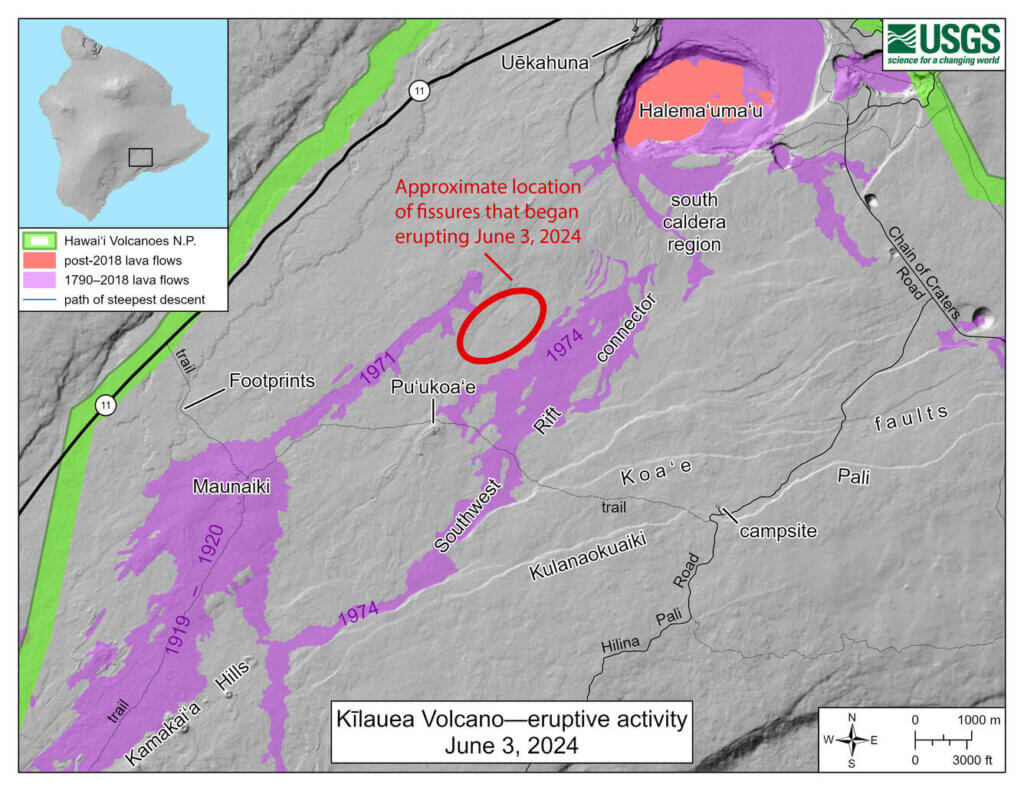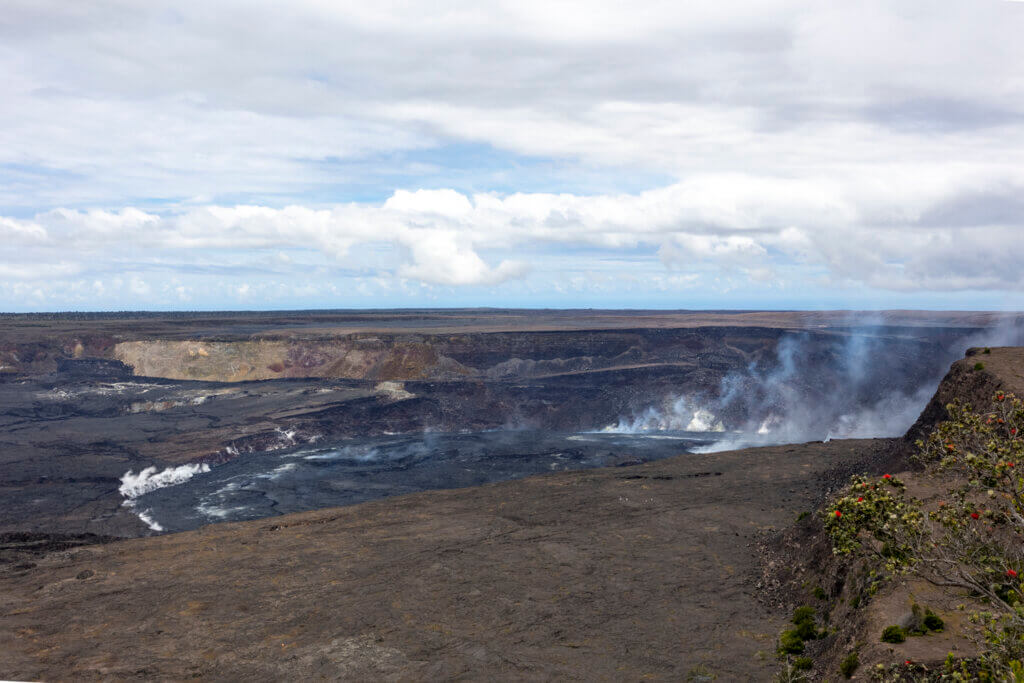Early yesterday morning, the Kilauea June 2024 eruption quietly began in a part of the volcano that hasn’t seen eruptive activity for the past 50 years. The area is inaccessible by car or foot, though the eruption has triggered some closures within the park.
Kilauea’s most recent eruption started on September 10, 2023, and lasted just under a week. Activity was wholly contained within Kilauea’s summit caldera, serving to build up the floor of the crater, which saw significant change during the volcano’s destructive 2018 eruptive episode. However, that’s not the case with the Kilauea June 2024 eruption, which is occurring outside of Halema’uma’u Crater.
Kilauea June 2024 Eruption
On Sunday, the USGS reported elevated seismic activity throughout the day. Such activity is usually a precursor for eruptive activity, though it can also indicate magma movement deep within Kilauea’s system that never results in any eruptive activity. Ground deformation, which also usually indicates an intrusion of magma, also picked up throughout Sunday, though volcanologists report seeing major deflation at about 8:00 pm.
Then, around 12:30 am yesterday morning, an employee at the Volcano House hotel within the park reported seeing a glow in the sky. This report was the first indication to volcanologists at the Hawaiian Volcano Observatory (HVO) that an eruption had begun.

The specific area where the Kilauea June 2024 eruption is occurring is roughly one-mile southwest of Halema’uma’u Crater and north of Maunaiki Trail and Pu’ukoa’e. No sanctioned or safe viewing area is currently available, nor is one planned. In fact, in response to the eruption, Maunaiki Trail and Hilina Pali Road have both been closed to visitors.

According to HVO Scientist-In-Charge Ken Hon, eruptions in this specific area are exceedingly rare. In fact, in the past 250 years, only two other eruptions have been recorded in the area. The last of these was an eruption in December 1974, which lasted just six hours. This eruption has already outlived that most recent one, though by 12:30 pm, all eruptive activity already ceased. That means this eruption lasted as the previous one in 1974.
The USGS states that the situation in the area remains dynamic, but I’d be surprised if the eruption restarted in this specific area. Further, the USGS state:
Fissure eruptions are often short-lived but can be difficult to forecast. They can display pauses of hours to days. The large crack system developed during the past day extends well past the westernmost active fissure, indicating that magma has been emplaced shallowly all the way to the east side of Maunaiki, where the most recent earthquake swarms are occurring. While the eruption today occurred due to the intrusion of new magma to the Southwest, it occurred in the vicinity of the dike that formed close to the surface on January 31, 2024. Continued input of newer, hotter magma could destabilize the stored magma. While the current eruption may be over, it is equally likely that it might resume at or to the west of the last active fissure.
So, additional activity is definitely a possibility in the area, but there’s no telling when or even if it will occur.

Final Thoughts
While the Kilauea June 2024 eruption has only officially “paused,” this has got to be the shortest eruption I’ve heard of in my lifetime. Of the three vents that opened during the beginning of the eruption, only one remained active as of mid-morning yesterday, and that one active vent’s activity slowly declined throughout the day until it stopped altogether. Oh well! If you got to see the eruption (or the glow from it) lucky you! If not, then no biggie. Again, it’s not like you could’ve seen the lava directly, anyway. Only the glow was visible from accessible sites around the park.
For the latest updates on the eruption, visit the USGS. For park-related updates, visit the Hawaii Volcanoes National Park.
